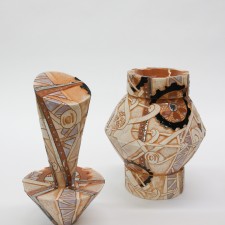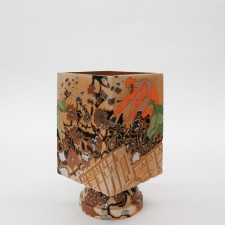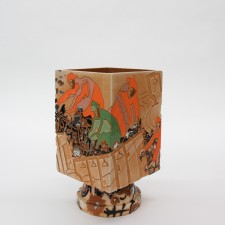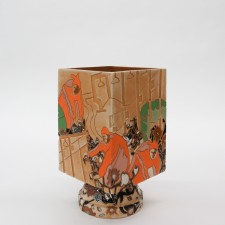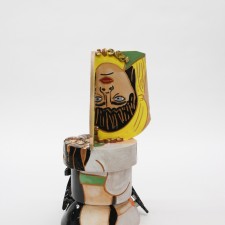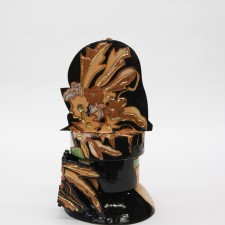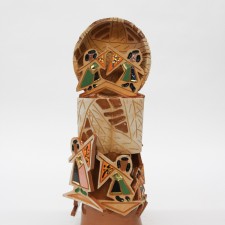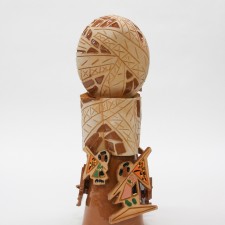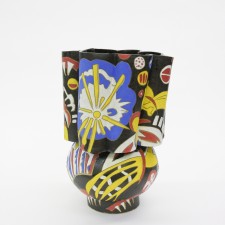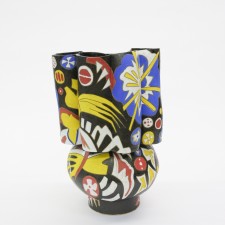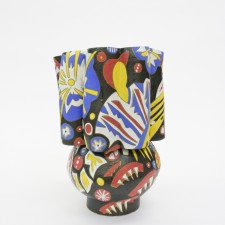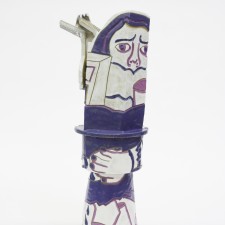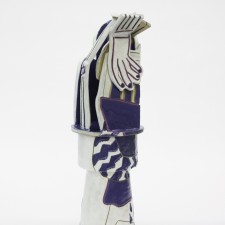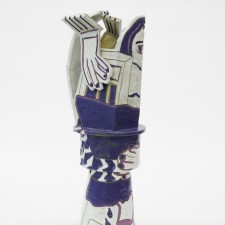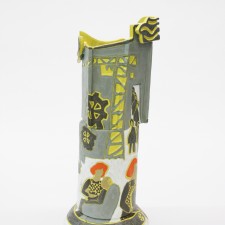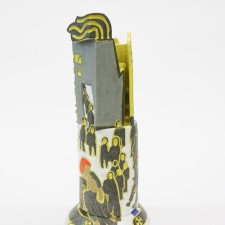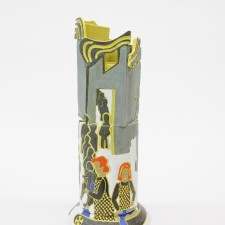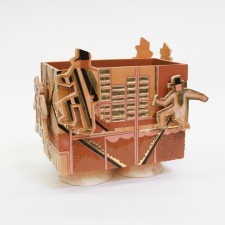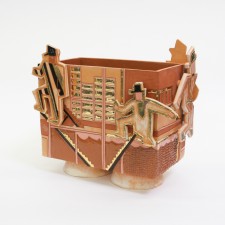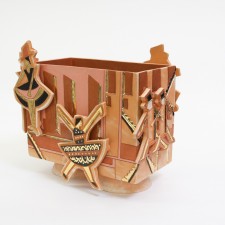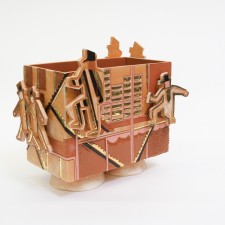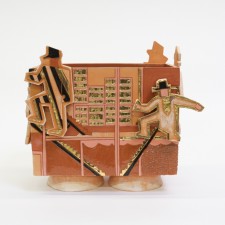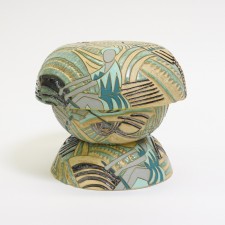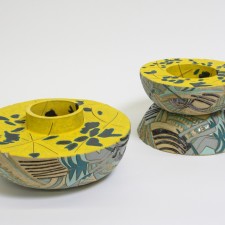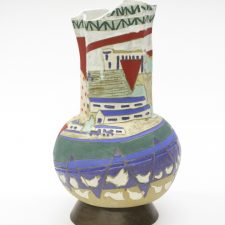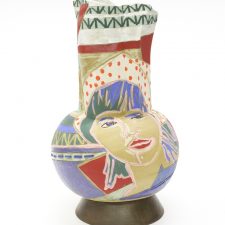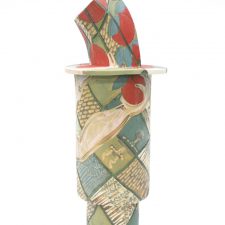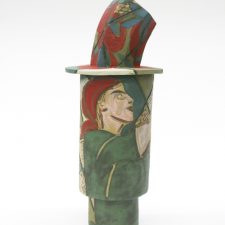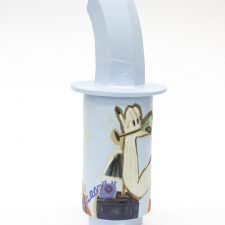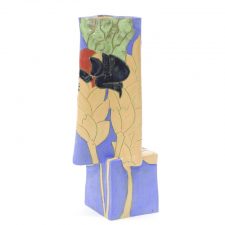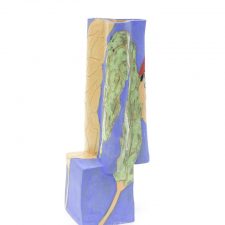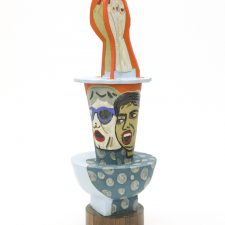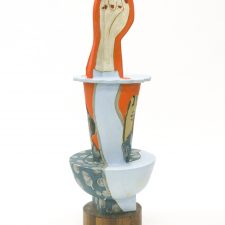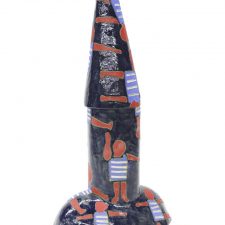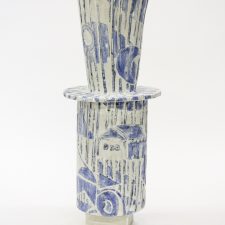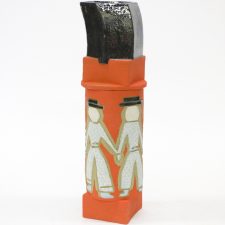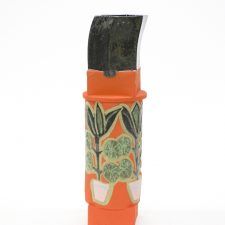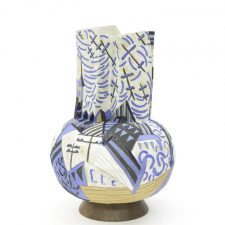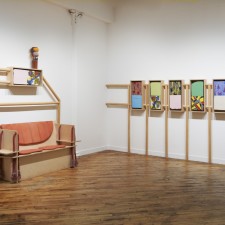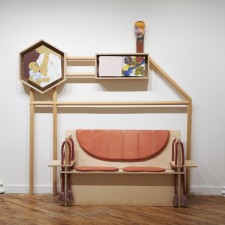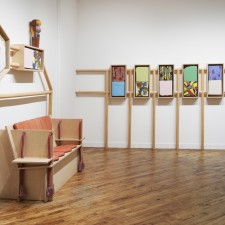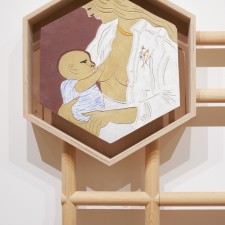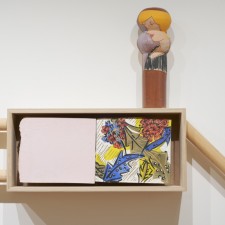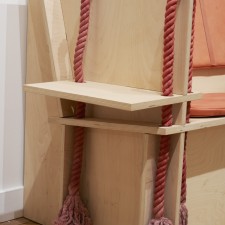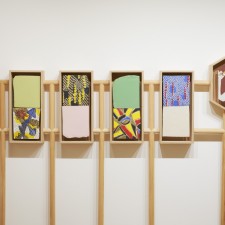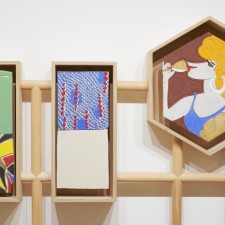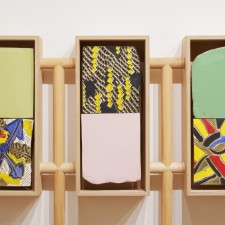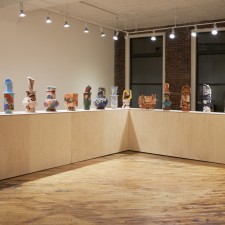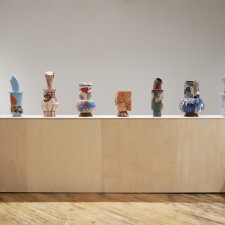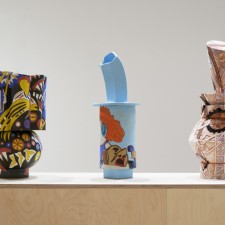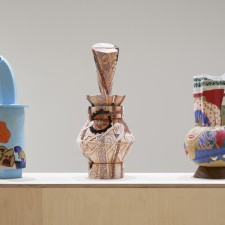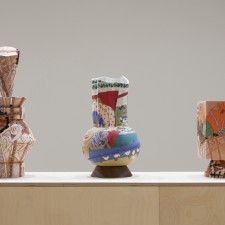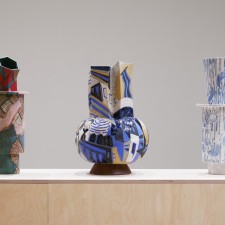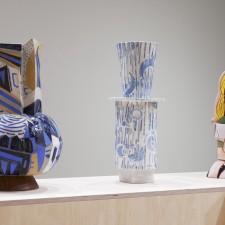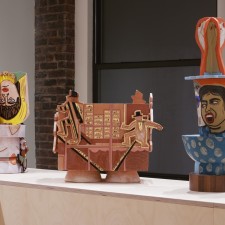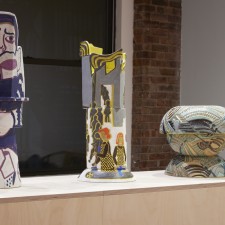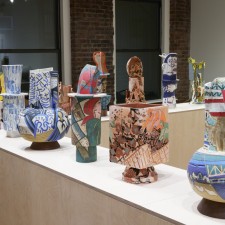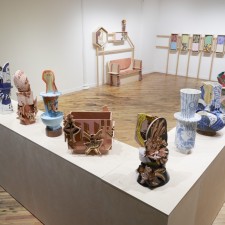Bari Ziperstein
Patterns of Propaganda at Charles Moffett Gallery
Opening reception: February 1, 2019, 6-8pm
Exhibition on view through March 22, 2019
265 Canal Street
Third Floor
New York, NY 10013
Charles Moffett is pleased to present Patterns of Propaganda, a one-person exhibition of recent works by Los Angeles-based artist Bari Ziperstein. The exhibition is Ziperstein’s first one-person show in New York.
While mining the collection archives at the Wende Museum of the Cold War in Culver City, California during a residency in 2015-16, Bari Ziperstein immersed herself in the aesthetics and ideas deployed in Soviet propaganda. She has subsequently explored the connections she finds between our present sociopolitical moment and the Soviet era in Europe in several concurrent and progressive bodies of work, the most recent of which is brought together with a selection of earlier works in Patterns of Propaganda.
In Ziperstein’s newest sculptures, she focuses on textiles designed for Soviet clothing and décor in several works made specifically for the exhibition. Immediately following the Russian Revolution, Russia faced shortages of most consumer goods, including fabric. As production was spurred to meet need, designers renounced pre-war European motifs that recalled the very class structures that Soviet Socialism claimed to abolish, favoring abstract geometric patterns over images of nature and historical events. These geometric patterns set the stage for a renewed interest in a uniquely Soviet style of representation and the potential for textile design to depict images of Soviet ideals. Avant-garde artists turned industrial designers like Varvara Stepanova and Liubov Popova expanded their repeated abstract imagery to include images like hammers, cogs, smokestacks, and vibrant young workers to project the ideals of the modern, communal proletariat. The designs are visually stunning, featuring deep, bright colors and bold, often kaleidoscopic patterns. By appropriating and recontextualizing these formal patterns, Ziperstein aims to remind us of historical patterns of oppression, upheaval, and revolution.
Patterns of Propaganda includes a selection of sculptures from earlier bodies of work, also emerging from the archives of the Wende Museum and Ziperstein’s further research into the aesthetics of Cold War propaganda. Anchoring the exhibition is A poster with graphics demonstrating the correct configuration and techniques used to create a political display., (2016) a mixed media sculpture imagined in response to Soviet propaganda displays devised for traveling trade show presentations. Fashioned from wood, leather, rope, and ceramic, the work’s shape and structure echo the dynamic flatness of the Constructivist aesthetic advanced in Soviet Russia. The designs on the ceramic tablets that are part of the work is derived from some of the earliest experiments in creating a truly Soviet textile aesthetic, combined with images from public address campaigns encouraging women to avoid alcohol and to commit to responsible motherhood.
Using terra cotta and stoneware to make her ceramic sculptures, Ziperstein continues her ongoing investigation of the vessel and tile forms, retaining the material and formal history of her medium as both utilitarian and narrative, while also pushing against conventional notions of shape and scale. The hard and soft slab construction method Ziperstein uses requires flattening clay into pliable sheets that can be curved, rolled, cut into shapes, layered, and incised to create drawings on the clay’s surface (a technique known as sgraffito). Working with her source material as a reference, Ziperstein draws freehand, into the clay, then adds colored matte underglazes and a variety of sheen glazes to the surfaces. The inherent flatness of slab construction harmonizes with the planar quality of the Constructivist style–and Soviet aesthetics more generally–and also nods at her source material, which she typically encounters in two dimensions via books, photographs, posters, and other ephemera and documentation.
Patterns of Propaganda celebrates the intense creativity of Cold War artists and industrial designers while also offering a reminder of the perils of groupthink. In the midst of our current social media era, the exhibition encourages us to think critically about the messages we expose ourselves to via all kinds of media and, by extension, reminds us of both the importance of and the fragility of free speech.
Bari Ziperstein was born in 1978 in Chicago, IL and lives in Los Angeles, CA. She received a Master of Fine Arts from the California Institute of the Arts, Valencia, CA in 2004 and a Bachelor of Fine Arts with a certificate in Women’s Studies from Ohio University, Athens, OH in 2000. One-person exhibitions of her work have been presented at Bethel University, Minneapolis, MN (2018); Museum of Art, Architecture, and Design, Santa Barbara, CA (2017); Wignall Museum of Contemporary Art, Rancho Cucamonga, CA (2010); Long Beach City College Project Space, Long Beach, CA (2009); The Harris Art Gallery, University of La Verne, La Verne, CA (2007); and the San Francisco Arts Commission, San Francisco, CA (2005). Her work has been included in thematic exhibitions such as Designing Women, Egg Collective, NYC (2018); All Hands on Deck, Ben Maltz Gallery, Otis College of Art & Design, Los Angeles, CA (2018); Making It Work: Production by Design, American Museum of Ceramic Art, Pomona, CA (2018); Corporeal Impulse, Vincent Price Art Museum, Los Angeles, CA (2015); Interior Forest, 18th Street Projects, Santa Monica, CA (2013); The Open Daybook, Los Angeles Contemporary Exhibitions, Los Angeles, CA (2011); Drama of the Gifted Child: The Five Year Plan, Armory Center for the Arts, Pasadena, CA (2009); Truthiness: Photography as Sculpture, California Museum of Photography, Riverside, CA (2008); and Multiple Vantage Points: Southern California Women Artists, 1980-2006, Los Angeles Municipal Art Gallery, Los Angeles, CA (2007).

